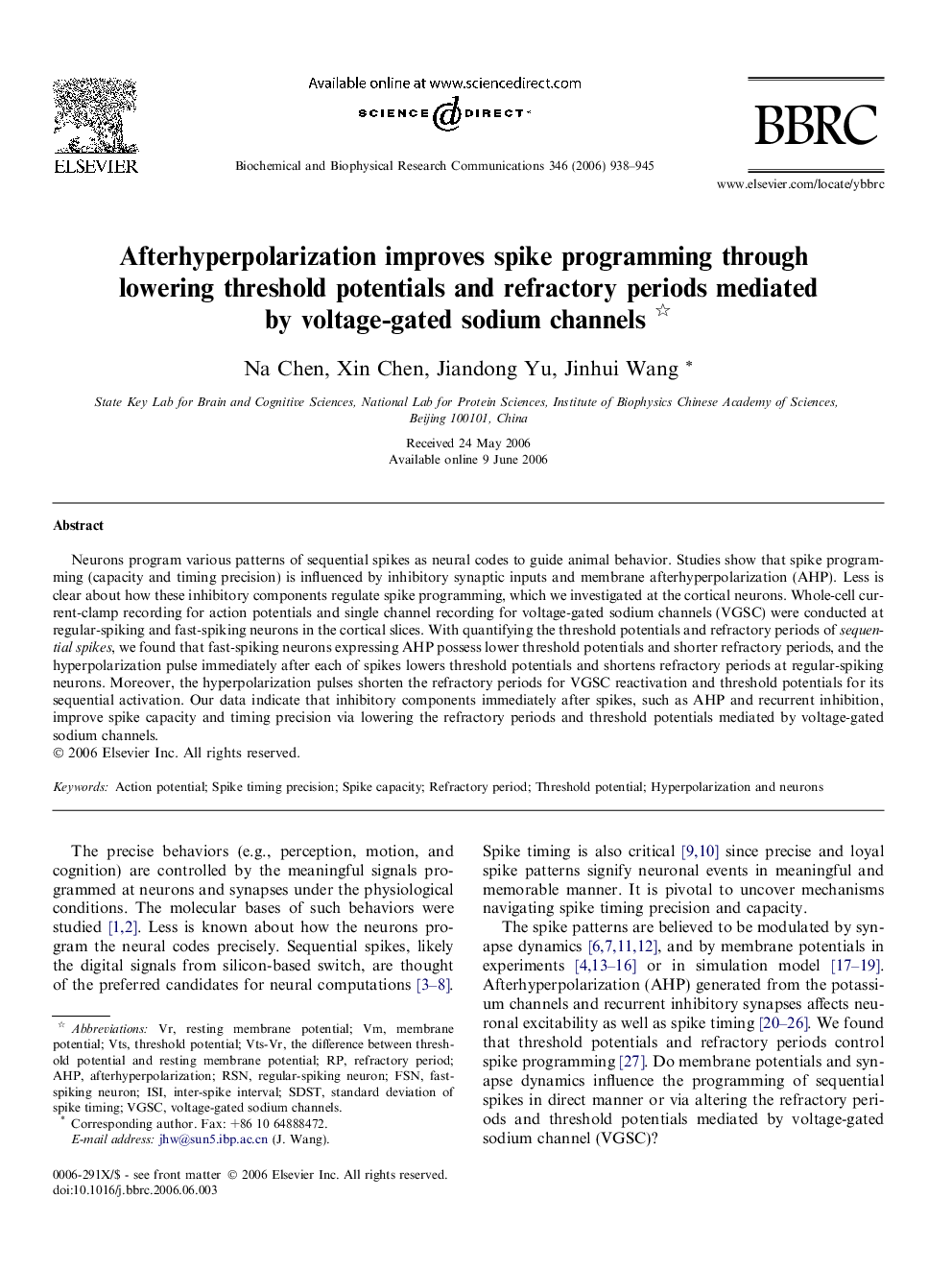| Article ID | Journal | Published Year | Pages | File Type |
|---|---|---|---|---|
| 1939477 | Biochemical and Biophysical Research Communications | 2006 | 8 Pages |
Neurons program various patterns of sequential spikes as neural codes to guide animal behavior. Studies show that spike programming (capacity and timing precision) is influenced by inhibitory synaptic inputs and membrane afterhyperpolarization (AHP). Less is clear about how these inhibitory components regulate spike programming, which we investigated at the cortical neurons. Whole-cell current-clamp recording for action potentials and single channel recording for voltage-gated sodium channels (VGSC) were conducted at regular-spiking and fast-spiking neurons in the cortical slices. With quantifying the threshold potentials and refractory periods of sequential spikes, we found that fast-spiking neurons expressing AHP possess lower threshold potentials and shorter refractory periods, and the hyperpolarization pulse immediately after each of spikes lowers threshold potentials and shortens refractory periods at regular-spiking neurons. Moreover, the hyperpolarization pulses shorten the refractory periods for VGSC reactivation and threshold potentials for its sequential activation. Our data indicate that inhibitory components immediately after spikes, such as AHP and recurrent inhibition, improve spike capacity and timing precision via lowering the refractory periods and threshold potentials mediated by voltage-gated sodium channels.
